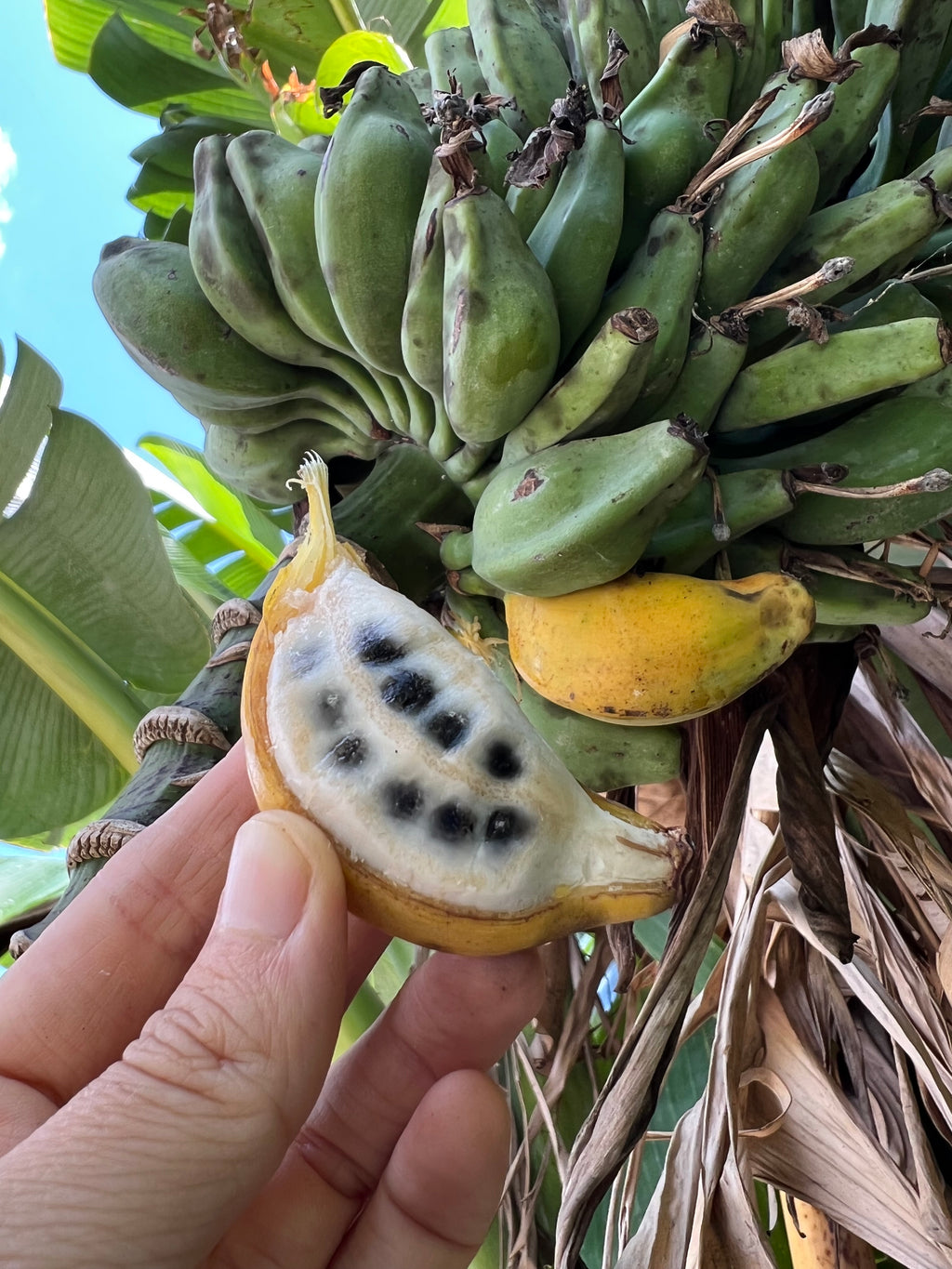The Real Story Of Bananas: From Wild To Table
What is a "real" banana? The banana you peel and eat today is a testament to human ingenuity, a far cry from its wild ancestors. The story of the banana is a fascinating journey through history, agriculture, and even genetic modification, a tale of extinction narrowly avoided and the constant threat of another looming.
From the bustling markets of Southeast Asia to the supermarket shelves worldwide, the banana has become a ubiquitous symbol of tropical bounty. But this familiar fruit, a staple in lunchboxes and smoothies, hides a complex history of selective breeding, disease, and the tireless efforts of farmers and scientists to keep this beloved fruit on our tables. What we perceive as a "real" banana is often just the tip of the iceberg, a single cultivar in a vast and diverse family of banana species.
| Scientific Name: | Musa spp. |
| Family: | Musaceae |
| Origin: | Southeast Asia |
| Major Producers: | India, China, Philippines, Ecuador, Costa Rica |
| Types: | Cavendish, Gros Michel, Lady Finger, Plantain, and hundreds more |
| Nutritional Value: | Rich in potassium, vitamin B6, vitamin C, and dietary fiber. |
More information on banana diversity and research
The Gros Michel, affectionately known as "Big Mike," reigned supreme as the world's favorite banana for decades. Its creamy texture and sweet flavor made it a global sensation. However, its susceptibility to Panama disease, a devastating fungal infection, led to its near-total demise in the 1950s. The Cavendish banana, resistant to the original strain of Panama disease, stepped in to fill the void, becoming the new "real" banana for most consumers. This substitution underscores the vulnerability of monocultures and the importance of genetic diversity in agriculture.
Yet, the Cavendish's dominance is precarious. A new strain of Panama disease, Tropical Race 4 (TR4), now threatens global banana production. This resurgence of the disease highlights the need for continued research and development of disease-resistant banana varieties to safeguard the future of this crucial food crop.
Beyond the Cavendish, a world of banana diversity awaits. From the compact and intensely sweet Lady Finger to the starchy plantains used in savory dishes, the spectrum of banana flavors and textures is remarkably broad. In many cultures, plantains, though technically bananas, are treated as a distinct culinary entity. They are often fried, boiled, or grilled, adding a unique dimension to local cuisines.
The process of domesticating the banana has transformed it significantly. Wild bananas, often filled with hard, inedible seeds, bear little resemblance to the convenient, seedless fruit we enjoy today. Selective breeding over centuries has resulted in the elongated, seedless bananas we're familiar with, prioritizing sweetness and ease of consumption.
The journey from a seeded wild fruit to a global commodity has involved more than just selective breeding. Modern techniques like cloning and genetic modification are now being employed to enhance disease resistance, improve yields, and even introduce new characteristics into banana varieties. These technologies offer potential solutions to the challenges facing banana production, but also raise important ethical and environmental considerations.
Organic banana farming presents a different approach, focusing on sustainable agricultural practices that minimize environmental impact and prioritize biodiversity. These farms often utilize techniques like intercropping, planting multiple crops together, to create more resilient and ecologically balanced ecosystems. This approach not only benefits the environment but also offers consumers an alternative to conventionally grown bananas.
While often referred to as a "banana tree," the banana plant is technically an herb, the largest herbaceous flowering plant. Its rapid growth and fleshy, non-woody stem classify it as such, a botanical nuance that often surprises many. This fast growth cycle allows for quick production, contributing to the banana's abundance and affordability.
The banana's journey from its Southeast Asian origins to global ubiquity is a testament to its adaptability and the human desire for its unique flavor and nutritional value. From ancient trade routes to modern shipping containers, the banana has traversed the globe, becoming a staple in diets and economies worldwide. The next time you peel a banana, consider the long and complex history behind this seemingly simple fruit a history that continues to unfold as researchers and farmers strive to ensure its future.
The story of the banana is not just about a single fruit; it's a reflection of our relationship with the natural world, our ability to shape it to our needs, and the constant challenge of maintaining balance in the face of evolving threats. The future of the banana, like so many other crops, depends on our willingness to learn from the past and embrace innovative solutions for a sustainable future.
:max_bytes(150000):strip_icc()/AppleBananas-56fb5fca3df78c7841a5963b.jpg)

